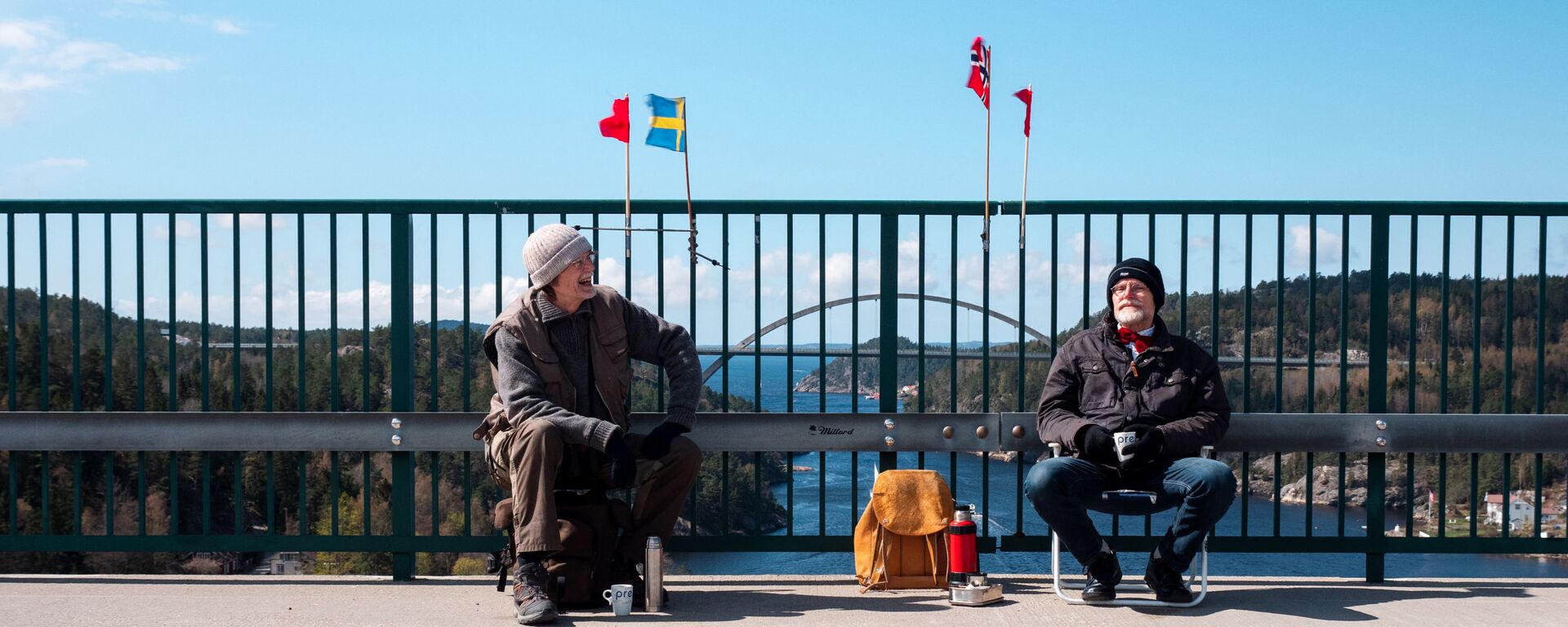Lockdowns Had ‘Little to No Effect’ on Covid Mortality, Were ‘Ill-Founded’, Johns Hopkins Study Says
19:15 GMT 03.02.2022 (Updated: 19:29 GMT 03.02.2022)

© ROBIN VAN LONKHUIJSEN
Subscribe
Countries around the world introduced hard lockdowns in 2020 aimed at ‘flattening the curve’ of the spread of the SARS-CoV-2 virus, with restrictions gradually eased through 2020 and early 2021 in most regions, with new restrictions, such vaccination mandates, partial lockdowns and QR code health passes, set up in their place.
Coronavirus lockdowns did almost nothing to curb Covid mortality, but had “devastating effects” on national economies and sparked a bevy of social problems, researchers led by Dr. Steve Hanke, the head of the Johns Hopkins Institute for Applied Economics, have concluded.
Their study, entitled ‘A Literature Review and Meta-Analysis of the Effects of Lockdowns on COVID-19 Mortality’, was based on a “systematic review and meta-analysis” of trends discovered in 34 economics, health science, and social science papers written over the past two years. Researchers determined that “lockdowns in Europe and the United States only reduced COVID-19 mortality by 0.2% on average.”
“While this meta-analysis concludes that lockdowns have had little to no public health effects, they have imposed enormous economic and social costs where they have been adopted. In consequence, lockdown policies are ill-founded and should be rejected as a pandemic policy instrument,” researchers recommended.
Scientists also found that the hard lockdown/shelter in place orders may have actually increased mortality and transmission of the virus, increasing spread in family units and limiting “peoples’ access to safe (outdoor) places such as beaches, parks, and zoos, or included outdoor mask mandates or strict outdoor gathering restrictions, pushing people to meet at less safe (indoor) places. Indeed, we do find some evidence that limiting gatherings was counterproductive and increased COVID-19 mortality.”
Researchers outlined a series of social consequences of lockdowns during the early phase of the pandemic, saying “they have contributed to reducing economic activity, raising unemployment, reducing schooling, causing political unrest, contributing to domestic violence, and undermining liberal democracy. These costs to society must be compared to the benefits of lockdowns, which our meta-analysis has shown are marginal at best.”
The paper’s authors also indicated that their findings were “in line with” the conclusions of a World Health Organization study from 2006 which found that social-distancing, isolation and quarantine measures implemented during the 1918 influenza pandemic proved similarly ineffective at the time.
The Johns Hopkins report has been treated coldly by most mainstream media outlets, with Dr. Martin Makary, a surgeon from the hospital unaffiliated with the research, blasting the university for “not even [putting] out a press release about this study” despite its status as potentially “one of the biggest studies in the world today.”
Appearing on Tucker Carlson’s show on Fox on Wednesday, Makary suggested that the number of lives saved from Covid by the lockdowns may have been offset dramatically by those who died from lack of timely medical care for other issues.
“This study…concluded that the lockdowns had no significant reduction of mortality, and an aggregated reduction of about two tenths of one percent. Now compare that number, which turns out to about 1,800 individuals, to the number of non-Covid deaths, what we call the excess non-Covid mortality in the United States: it was 124,000 excess deaths in year one. So over two years it was about a quarter million people who died,” Makary calculated.
“Many, many scientists have not begun to peel back this number to understand why were more people dying than the normal death rate in the United States for reasons not related to Covid. Well we’re now understanding that 60-70,000 of them died from substance abuse, deferred cancer care – that statistic takes year to accrue. We know about the self-harm and suicide numbers, and there are hundreds of kids in Baltimore alone that the teachers [have said] never logged on to their virtual learning modules, and they were lost to follow-up forever in the school system,” the doctor added.
Dr. Neil Ferguson, the director of the MRC Center for Global Infectious Disease Analysis at Imperial College London, whose recommendations in the early days of the pandemic proved central to the World Health Organization and national governments in implementing the lockdown strategy, dismissed the Johns Hopkins study’s conclusions.
“This report on the effect of ‘lockdowns’ does not significantly advance our understanding of the relative effectiveness of the plethora of public health measures adopted by different countries to limit Covid-19 transmission. First, the policies which comprised ‘lockdown’ varied dramatically between countries, meaning defining the term is problematic…A second and more important issue is that the statistical methods used to estimate the impact of [non-pharmaceutical interventions] using observational data need to be appropriate. Such interventions are intended to reduce contact rates between individuals in a population, so their primary impact, if effective, is on transmission rates,” Ferguson said.


